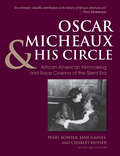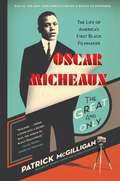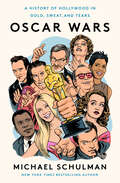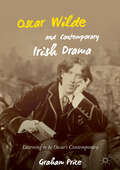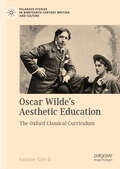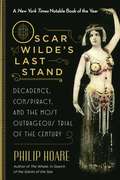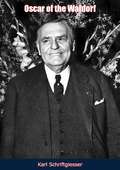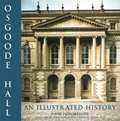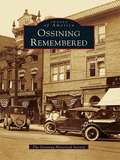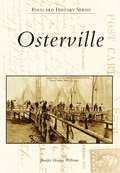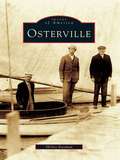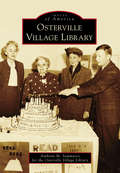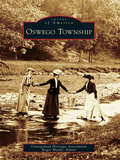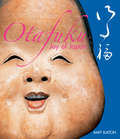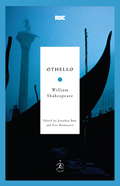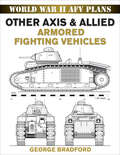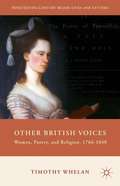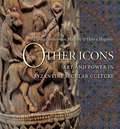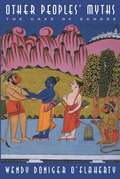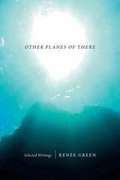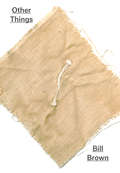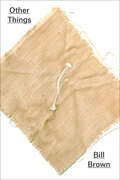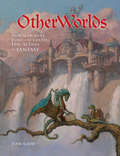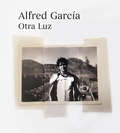- Table View
- List View
Oscar Micheaux and His Circle
by Pearl Bowser Jane Gaines Charles MusserOscar Micheaux--the most prolific African American filmmaker to date and a filmmaking giant of the silent period--has finally found his rightful place in film history. Both artist and showman, Micheaux stirred controversy in his time as he confronted issues such as lynching, miscegenation, peonage and white supremacy, passing, and corruption among black clergymen. In this important collection, prominent scholars examine Micheaux's surviving silent films, his fellow producers of race films who alternately challenged or emulated his methods, and the cultural activities that surrounded and sustained these achievements. The relationship between black film and both the stage (particularly the Lafayette Players) and the black press, issues of underdevelopment, and a genealogy of Micheaux scholarship, as well as extensive and more accurate filmographies, give a richly textured portrait of this era. The essays will fascinate the general public as well as scholars in the fields of film studies, cultural studies, and African American history. This thoroughly readable collection is a superb reference work lavishly illustrated with rare photographs.
Oscar Micheaux: The Great and Only
by Patrick McgilliganOscar Micheaux was the Jackie Robinson of film, the black D. W. Griffith: a bigger-than-life American folk hero whose important life story is nearly forgotten today. Now, in a feat of historical investigation and vivid storytelling, one of our greatest film biographers takes on one of the most talented and complex figures in the history of American entertainment. The son of freed slaves, Micheaux grew up in Metropolis, Illinois, then roamed America as a Pullman porter before making his first mark as a homesteader in South Dakota. Disaster and defeat there led him to forge a career publishing a successful series of autobiographical novels. Ever the entrepreneur, when Hollywood failed to bid high enough for film rights to his stories, he answered by forming his own film production company. Going on to produce or direct twenty-two silent and fifteen sound films in his lifetime, Micheaux became the king of the "race cinema" industry at a time when black-produced films had to scrounge for venues in a segregated society. In this groundbreaking new biography, award-winning film historian Patrick McGilligan offers a vivid and fascinating portrait of this little-known pioneer. Part visionary, part raffish Barnum-like showman, Micheaux was both a maverick filmmaker and an inveterate hustler who used every weapon at his disposal to break the color barrier and thrive in a profession he helped to invent. He made a fortune and lost it again, and launched repeated con games that were followed by public arrests and bankruptcies. He eagerly took credit for the work of others-including his unsung-heroine wife. In his desperate later years, he even sunk to plagiarizing his final novel-a discovery McGilligan reveals here for the first time. In this searching exploration, McGilligan tracks down long-lost financial records, unpublished letters, and unmarked pauper's graves, pinpointing Micheaux's birthplace, his tangled personal life, and the circumstances of his tragic death. The result is an epic that bridges a fascinating period in American history, and offers lessons for anyone who would understand the role of black America in forming the culture of our time.
Oscar Wars: A History of Hollywood in Gold, Sweat, and Tears
by Michael SchulmanThe author of the New York Times bestseller Her Again: Becoming Meryl Streep returns with a lively history of the Academy Awards, focusing on the brutal battles, the starry rivalries, and the colorful behind-the-scenes drama.America does not have royalty. It has the Academy Awards. For nine decades, perfectly coiffed starlets, debonair leading men, and producers with gold in their eyes have chased the elusive Oscar. What began as an industry banquet in 1929 has now exploded into a hallowed ceremony, complete with red carpets, envelopes, and little gold men. But don’t be fooled by the pomp: the Oscars, more than anything, are a battlefield, where the history of Hollywood—and of America itself—unfolds in dramas large and small. The road to the Oscars may be golden, but it’s paved in blood, sweat, and broken hearts.In Oscar Wars, Michael Schulman chronicles the remarkable, sprawling history of the Academy Awards and the personal dramas—some iconic, others never-before-revealed—that have played out on the stage and off camera. Unlike other books on the subject, each chapter takes a deep dive into a particular year, conflict, or even category that tells a larger story of cultural change, from Louis B. Mayer to Moonlight. Schulman examines how the red carpet runs through contested turf, and the victors aren't always as clear as the names drawn from envelopes. Caught in the crossfire are people: their thwarted ambitions, their artistic epiphanies, their messy collaborations, their dreams fulfilled or dashed.Featuring a star-studded cast of some of the most powerful Hollywood players of today and yesterday, as well as outsiders who stormed the palace gates, this captivating history is a collection of revelatory tales, each representing a turning point for the Academy, for the movies, or for the culture at large.
Oscar Wilde and Contemporary Irish Drama: Learning to be Oscar's Contemporary
by Graham PriceThis book is about the Wildean aesthetic in contemporary Irish drama. Through elucidating a discernible Wildean strand in the plays of Brian Friel, Tom Murphy, Thomas Kilroy, Marina Carr and Frank McGuinness, it demonstrates that Oscar Wilde's importance to Ireland's theatrical canon is equal to that of W. B. Yeats, J. M. Synge and Samuel Beckett. The study examines key areas of the Wildean aesthetic: his aestheticizing of experience via language and self-conscious performance; the notion of the dandy in Wildean texts and how such a figure is engaged with in today's dramas; and how his contribution to the concept of a ‘verbal theatre’ has influenced his dramatic successors. It is of particular pertinence to academics and postgraduate students in the fields of Irish drama and Irish literature, and for those interested in the work of Oscar Wilde, Brian Friel, Tom Murphy, Thomas Kilroy, Marina Carr and Frank McGuinness.
Oscar Wilde's Aesthetic Education: The Oxford Classical Curriculum (Palgrave Studies in Nineteenth-Century Writing and Culture)
by Leanne GrechThis book focuses on the role that the Oxford classical curriculum has had in shaping Oscar Wilde’s aestheticism. It positions Wilde as a classically trained intellectual and outlines the path he took to gain recognition as a writer and promoter of the aesthetic movement. This narrative is conveyed through a broad range of literary sources, including Wilde’s travel poetry, American lectures, and canonical works like ‘The Critic as Artist’, The Soul of Man, The Picture of Dorian Gray and De Profundis. This study proposes that Wilde approached aestheticism as a personalised, self-directed learning experience – a mode of self-culture – which could be used to maintain an intellectual life outside of the university. It also explores Wilde’s thoughts on education and considers the significance of male friendship at Oxford, and in Wilde’s life and literature.
Oscar Wilde's Last Stand: Decadence, Conspiracy, and the Most Outrageous Trial of the Century
by Philip HoareA New York Times Notable Book of the Year that Sir Ian McKellen called "a shocking tale of heroes and villains-illuminating and upsetting in equal measure.”The first production of Oscar Wilde’s Salomé in 1918, with American exotic dancer Maud Allan dancing lead, ignited a firestorm in London spearheaded by Noel Pemberton Billing, a member of Parliament and self-appointed guardian of family values. Billing attacked Allan in the right-wing newspaper Vigilante as a member of the "Cult of the Clitoris,” a feminine version of the "Cult of the Wilde,” a catchall for the degeneracy and perversion he was convinced had infected the land. He claimed that a black book was in the hands of their enemies the Germans, a book that contained the names of thousands of the British establishment who without doubt were members of the cult. Threat of exposure was costing England the war.Allan sued Billing for libel, and the ensuing trial, brought to life in this authoritative, spellbinding book, held the world in thrall. Was there or was there not a black book? What names did it contain? The trial was both hugely entertaining and deadly serious and raised specters of hysteria, homophobia, and paranoia that, like Oscar Wilde himself, continue to haunt us. As in Wilde’s own trial in 1895, libel was hardly the issue; the fight was for control over the country’s moral compass. In Oscar Wilde’s Last Stand, biographer and historian Philip Hoare gives us the full drama of the Billing trial, gavel to gavel, and brings to life this unique, bizarre, and fascinating event.Skyhorse Publishing, as well as our Arcade imprint, are proud to publish a broad range of books for readers interested in history--books about World War II, the Third Reich, Hitler and his henchmen, the JFK assassination, conspiracies, the American Civil War, the American Revolution, gladiators, Vikings, ancient Rome, medieval times, the old West, and much more. While not every title we publish becomes a New York Times bestseller or a national bestseller, we are committed to books on subjects that are sometimes overlooked and to authors whose work might not otherwise find a home.
Oscar of the Waldorf
by Karl SchriftgiesserThe present volume is the biography of Oscar Tschirky (1866-1943), known throughout the world as Oscar of the Waldorf, who worked as maître d’hôtel of the Waldorf Astoria Hotel in New York City from 1893 to 1943. The book contains many recollections devoted to the Waldorf Astoria Hotel and its founder, George C. Boldt, and his wife, Louise Kehrer Boldt.Richly illustrated throughout with black and white photographs.
Osgoode Hall: An Illustrated History
by John HonsbergerWinner of the 2006 Fred Landon Award Osgoode Hall is a national monument and one of the architectural treasures of Canada. Of the many public buildings erected in pre-confederation Canada and British North America, it best encapsulates the diverse stylistic forces that shaped public buildings in the first half of the nineteenth century. The gated lawns, grandly Venetian rotunda, the noble dimensions of its library, handsome and ornate courtroom, portrait-lined walls and stained glass evoke a venerable dignity to which few Canadian institutions even aspire. It has been the seat of the Law Society of Upper Canada since 1832 and of several of the Superior Courts of the province for almost as long. Intended to be the focal point of the legal profession in Upper Canada it has become a symbol of the legal tradition not only in Ontario but throughout Canada and beyond.
Ossining Remembered (Images of America)
by The Ossining Historical SocietyOssining commands a position high on the banks of the Hudson River, at the edge of Westchester County, New York. Perhaps best known as the location of Sing Sing Prison, Ossining is rich in history and in personal memories. The history and memories come through clearly in this book of exceptional photographs. Ossining Remembered focuses on the heart of the town, from Main Street out to the river. Included are images of places that made downtown Ossining the dynamic community it once was--the theater, the cigar store, and the bakery. Also featured are vintage photographs of the riverfront mansions and estates, the numerous educational institutions and churches, and, of course, the famous prison.
Ostalgie in German Cinema After Reunification
by Tatiana AstafevaThis book provides a thorough overview of the ostalgie films about the German Democratic Republic (GDR) produced since the 1990s. Far from being a homogenous phenomenon that romanticizes the totalitarian state, the ostalgie genre is multifaceted, reflexive, and at times subversive. Thus, Astafeva argues, the core of "ostalgie" is an experience of distance that is ‘prefocused’ by various aesthetic strategies. This genre-based definition makes it possible to conceptualize the phenomenon of ostalgie film in its heterogeneity and to reveal the mechanisms that lay in the essence of ostalgic experience. The cognitivist-phenomenological approach is underpinned by historiographic and genre theory and close analysis of film examples—from the most popular ostalgie films such as Goodbye, Lenin! (Wolfgang Becker, 2003) to lesser-known film productions and recent series such as Kleo (2022–2024)—that allow exploration of various functions of the ostalgic experience. Ostalgie films can foster uncritical reactionary and conservative views of history and expose the experience of distance by orienting aesthetics toward kitsch and retro. They can also encourage reflexive and meta-reflexive understandings of history so that the GDR past is critically discussed and reworked. Furthermore, ostalgie films can in some cases activate historical consciousness, facilitate the production of historical knowledge, and generate ethical thinking and empathy.
Osterville
by Jennifer Morgan WilliamsIn the late 1800s, Osterville emerged as a destination. People would arrive by stagecoach and train to stay at the many inns and lodges around this coastal village. West Bay Inn and East Bay Lodge became social gathering spots where people would stay for weeks or months. Churches, family markets, and the library lined Main Street. In 1914, the Crosby family designed a special racing class of boats--the Wianno Seniors. The Wianno Senior Knockabouts were commissioned by the wealthy families that founded the exclusive clubs Seapuit, Osterville-Wianno, and Oyster Harbors; Osterville-Wianno and Oyster Harbors are still known for their golf courses and are enjoyed by residents and visitors today.
Osterville (Images of America)
by Shirley EastmanThe tiny seaside village of Osterville was settled in the 1700s by hardy Colonists determined to make a living harvesting oysters. The village is home to the Crosby Yacht Yard, which has been turning out superior craft since the 1840s. Pres. John F. Kennedy often sailed his Crosby Wianno Senior on Nantucket Sound when he vacationed at his Cape Cod home. Osterville follows this town's evolution, from a haven for captains of great merchant ships to a summer playground for such storied families as the Mellons and DuPonts. Today, Osterville's superb beaches and laid-back lifestyle attract not only the rich and famous but also year-round residents who enjoy a relaxed and sophisticated lifestyle.
Osterville Village Library (Images of America)
by Anthony M. LibSince its beginnings in 1882, the Osterville Village Library has long fulfilled its founding promise to be “a free library and reading room at Osterville in the Town of Barnstable in this Commonwealth” and to support “the promotion of study and reading.” William Lloyd Garrison Jr. and a group of civic-minded residents led the effort to establish this fourth library on Cape Cod. It has seen tremendous growth since then, with the opening of a new library designed by Stanley Alger of Alger & Gunn in 1958, followed by a new state-of-the-art library designed by Charles Bellingrath and completed by Jeremiah Ford of Ford3 Architects in 2012. The Osterville Village Library is justifiably the pride of Osterville, from its professional and welcoming staff and generous supporters to its cupola that boasts a copper weather vane of the Wianno Senior.
Oswego Township (Images of America)
by Oswegoland Heritage Association Roger MatileIn 1832, John, Walter, and Daniel Pearce, and their brother-in-law, William Smith Wilson, walked west from their homes in Ohio prospecting for land. When they reached the Fox River in the vicinity of modern Oswego, they agreed they had found the place they wanted to settle. The next year, 1833, after selling their Ohio farms, they traveled west by wagon with their families and became the first settlers in Oswego Township. Just two years later, Lewis B. Judson and Levi F. Arnold laid out a new village on land first claimed by Wilson, creating the foundation of today's bustling village of Oswego. A stagecoach route crossroads, the seat of KendallCounty for nearly 20 years, and a market town for the surrounding agricultural area, Oswego grew steadily until the Civil War. After the war, growth slowed until the second half of the 20th century when the area began to boom, both in population and economically. This book offers many of the area's newest residents a chance to look back at Oswego Township's rich heritage.
Otafuku: Joy of Japan
by Yutaka Satoh Amy Slyvester KatohWith dozens of color photographs and fun, informative text, this guide to Japanese otafuku is a delight for collectors or Japanese culture enthusiasts.Anywhere you go in Japan you are likely to encounter the plump, smiling image of Otafuku. <P><P>Author Amy Sylvester Katoh traces the roots and folk beginnings of this mythic figure, showing Otafuku's many delightful identities, and providing a magical glimpse into this charming character who has become a national icon.With a mixture of poems, photographs, anecdotes, and stories, she presents a veritable treasure chest of surprises that is sure to enchant readers.
Othello: Le More De Venise... (Modern Library Classics)
by William Shakespeare Jonathan Bate Eric RasmussenThough this great tragedy of unsurpassed intensity and emotion is played out against Renaissance splendor, its story of the doomed marriage of a Venetian senator’s daughter, Desdemona, to a Moorish general, Othello, is especially relevant to modern audiences. The differences in race and background create an initial tension that allows the horrifyingly envious villain Iago methodically to promote the “green-eyed monster” jealousy, until, in one of the most deeply moving scenes in theatrical history, the noble Moor destroys the woman he loves–only to discover too late that she was innocent.Each Edition Includes:• Comprehensive explanatory notes • Vivid introductions and the most up-to-date scholarship • Clear, modernized spelling and punctuation, enabling contemporary readers to understand the Elizabethan English• Completely updated, detailed bibliographies and performance histories • An interpretive essay on film adaptations of the play, along with an extensive filmography
Other Axis & Allied Armored Fighting Vehicles: World War II AFV Plans (AFV Plans)
by George BradfordThis fully illustrated volume presents an authoritative and highly detailed study of WWII&’s lesser-known armored fighting vehicles. The iconic tanks of WWII, such as America&’s Shermans and the Germany&’s Panzers, have been exhaustively studied. In Other Axis & Allied Armored Fighting Vehicles, military historian and technical artist George Bradford offers an in-depth look at a range of significant yet often-overlooked models. This volume is filled with fine-scale drawings of Australian, Belgian, Canadian, Czech, French, Hungarian, Italian, Japanese, Polish, Romanian, and South African armored vehicles, including: · Centauro Tank Destroyer (Italy) · TKS Light Reconnaissance Tank (Poland) · Ram &“Kangaroo&” Personnel Carrier (Canada) · Renault R-35 Light Tank (France) · Type 3 Chi-nu Heavy Tank (Japan) · Scorpion AC1 Cruiser Tank (Australia) · TACAM R-2 Tank Hunter (Romania) · And many, many more . . .
Other British Voices: Women, Poetry, and Religion, 1766-1840 (Nineteenth-Century Major Lives and Letters)
by Timothy WhelanOther British Voices.
Other Icons: Art and Power in Byzantine Secular Culture
by Henry Maguire Eunice Dauterman MaguireA winged centaur with the spotted body of a leopard playing a lute; a naked man with an animal head; a goat-footed Pan; a four-bodied lion; sphinxes, and hippocamps. Few would associate these forms of art with the Byzantine era, a period dominated by religious art. However, an art of strikingly secular expression was not only common to Byzantine culture, but also key to defining it.In Other Icons, Eunice Dauterman Maguire and Henry Maguire offer the first comprehensive view of this "unofficial" Byzantine art, demonstrating the role it played and its dialogue with traditional Christian Byzantine art. This beautifully illustrated book creates an entirely new understanding of the whole of Byzantine art and culture.With its wide-ranging examples, the book vividly demonstrates how the surprise of this "profane" art is not only in its subjects of mythic creatures, exotic imagery, and eroticism, but also in the ubiquity and beauty of their placement--within churches and without, woven into silk, illuminated on manuscripts, engraved into pottery, painted in frescoes, and taking life in marble, bone, and ivory.By presenting and exploring this profane art for the first time in a scholarly book in English, Other Icons will change the way we look at the art of an entire era.
Other Planes of There: Selected Writings
by Renée GreenFor more than two decades, the artist Renée Green has created an impressive body of work in which language is an essential element. Green is also a prolific writer and a major voice in the international art world. Other Planes of There gathers for the first time a substantial collection of the work she wrote between 1981 and 2010. The selected essays initially appeared in publications in different countries and languages, making their availability in this volume a boon to those wanting to follow Green's artistic and intellectual trajectory.Charting this cosmopolitan artist's thinking through the decades, Other Planes of There brings essays, film scripts, reviews, and polemics together with reflections on Green's own artistic practice and seminal artworks. It immerses the reader in three decades of contemporary art showcasing the art and thought, the incisive critiques and prescient observations of one of our foremost artists and intellectuals. Sound, cinema, literature, time-based media, and the relationship between art forms and other forms of knowledge are just a few of the matters that Green takes up and thinks through. Sixty-four pages of color plates were selected by the artist for this lavishly illustrated volume.
Other Things
by Bill BrownFrom the pencil to the puppet to the drone--the humanities and the social sciences continue to ride a wave of interest in material culture and the world of things. How should we understand the force and figure of that wave as it shapes different disciplines? Other Things explores this question by considering a wide assortment of objects--from beach glass to cell phones, sneakers to skyscrapers--that have fascinated a range of writers and artists, including Virginia Woolf, Man Ray, Spike Lee, and Don DeLillo. The book ranges across the literary, visual, and plastic arts to depict the curious lives of things. Beginning with Achilles's Shield, then tracking the object/thing distinction as it appears in the work of Martin Heidegger and Jacques Lacan, Bill Brown ultimately focuses on the thingness disclosed by specific literary and artistic works. Combining history and literature, criticism and theory, Other Things provides a new way of understanding the inanimate object world and the place of the human within it, encouraging us to think anew about what we mean by materiality itself.
Other Things
by Bill BrownFrom the pencil to the puppet to the drone—the humanities and the social sciences continue to ride a wave of interest in material culture and the world of things. How should we understand the force and figure of that wave as it shapes different disciplines? Other Things explores this question by considering a wide assortment of objects—from beach glass to cell phones, sneakers to skyscrapers—that have fascinated a range of writers and artists, including Virginia Woolf, Man Ray, Spike Lee, and Don DeLillo. The book ranges across the literary, visual, and plastic arts to depict the curious lives of things. Beginning with Achilles’s Shield, then tracking the object/thing distinction as it appears in the work of Martin Heidegger and Jacques Lacan, Bill Brown ultimately focuses on the thingness disclosed by specific literary and artistic works. Combining history and literature, criticism and theory, Other Things provides a new way of understanding the inanimate object world and the place of the human within it, encouraging us to think anew about what we mean by materiality itself.
OtherWorlds: How to Imagine, Paint and Create Epic Scenes of Fantasy
by Tom KiddGo where no artist has ever gone before. Bizarre terrains, enchanted forests, futuristic metropolises, ornate palaces ... these are the places where adventure dwells. In this fun and fiercely original book from celebrated fantasy artist Tom Kidd, you'll learn how to set the scene for epic tales of adventure. Discover where Kidd finds his best ideas, the methods behind his glorious color sense, and how he turns it all into exquisite skies, glittering cities, spectacular rock formations, stormy seas, magnificent forests and other bold, breathtaking vistas. Learn to draw and paint fantastic settings in a way that makes them utterly believable Get imagination-sparking approaches for dreaming up these strange new realms, seeing the world around you with fresh eyes and finding ready inspiration in the most ordinary of places 13 step-by-step demonstrations show how ideas are developed into dynamic color oil and watercolor renderings, with some discussion of digital techniques This book is your ticket to destinations of absolute wonder and bizarre beauty. Thrill your viewers by transporting them to locales so vast and unreal, it will take their breath away.
Otra Luz
by Alfred GarcíaEste conjunto de poemas, canciones y fotografías de Alfred García son el cuaderno de bitácora de su última gira y de algunas impresiones que tuvo a partir de su participación en Operación Triunfo, Eurovisión y de la creación de su disco 1016. Sus textos e instantáneas nos permiten conocer su mundo íntimamente. «Los que le conocéis y cantáis sus temas en los conciertos, que no para de ofrecer en esta gira interminable, sabéis de lo que hablo. Muchos días actúa por convicción, pero, como buen músico de jazz, sabe que la improvisación lo es todo en la vida, más para un individuo tan intuitivo como él.»David Castillo, periodista, escritor y biógrafo de Dylan
